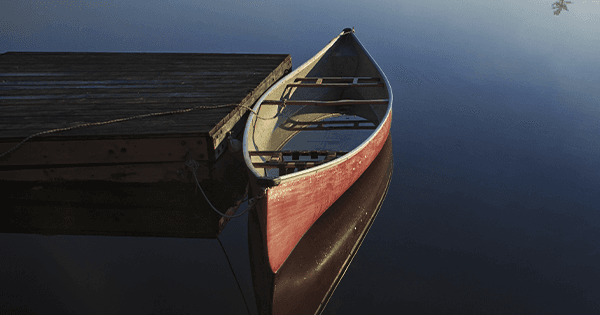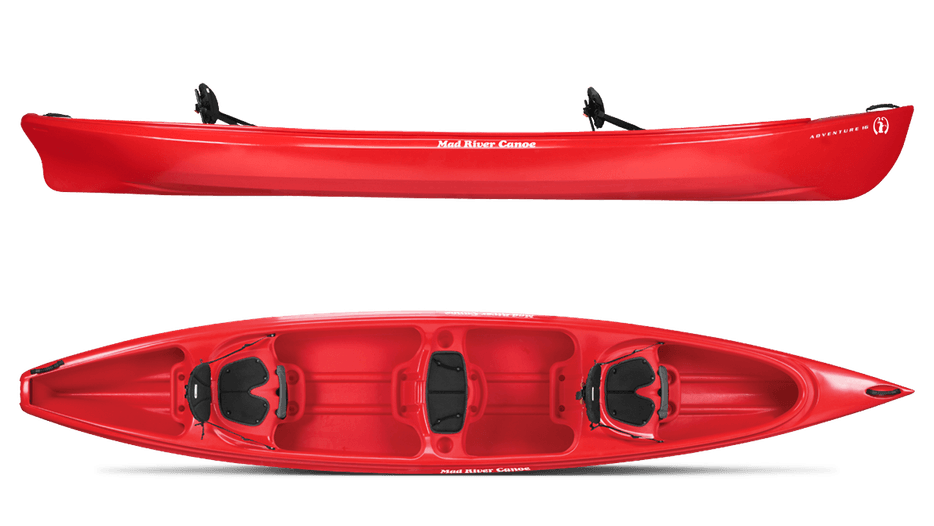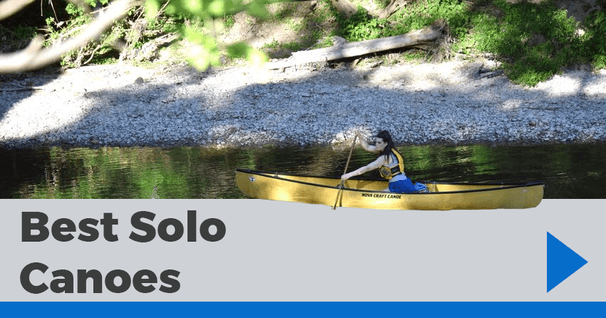Choosing the Right Canoe for You
Remember when you bought your first car? Or maybe it was a bike. You may have chosen it for its color, or other non-functional features and realized later that you bought it for all the wrong reasons. Don’t make the same mistake with your first canoe. Before you go shopping, there are a few things you need to figure out.

Questions to consider when purchasing your first canoe
First, what type of paddling are you going to do with your canoe? This will help determine the design of the boat that you want to purchase. This may not be an easy question to answer. Perhaps the type of paddling you are going to do will evolve over the life of the canoe. Boats are designed for specific types of paddling, but there are many designs that balance characteristics for a good all-round, multi-use canoe. For the sake of this conversation, we will use the following three types of paddling to categorize the canoes you may want to purchase.
- Recreation - Paddling around the beach or short day trips, fishing etc.
- Lakewater/Touring – Day trips to multi-day trip
- Whitewater - Day trips and multi-day river expeditions
Second, you need to decide what you are going to prioritize with regard to weight, durability, cost, and performance. We would all love to buy a lightweight boat that is indestructible, super cheap and performs perfectly in all conditions. Unfortunately that boat does not exist. We are forced to weigh the pros and cons of each. You need to think about how you will use the boat and what factors are important to you.
- Weight - Will you carry it a lot? Do you need to load/unload it from your car regularly, alone? If so, weight may be a huge deciding factor. Or maybe weight doesn’t matter if you keep your canoe on the beach, or you have a 15-year-old son to load and unload it for you.
- Durability – How long do you want your canoe to last? If you treat it with care and maintain your canoe, it could last your lifetime. A tougher boat usually means compromising on weight, often cost, and sometimes performance. How durable your boat needs to be depends on what you are doing with it. Are you running rapids? Hitting rocks? Is it going to be run into the dock? Regularly get dragged across a pebble beach?
- Cost – Cost mostly depends on materials. The lowest cost boats are plastic. Plastic-laminate boats are more expensive (comparable to fiberglass), while the lightweight and durable Kevlar and carbon-fiber boats are on the higher end of the price range.
- Performance – Lighter boats are easier to maneuver and more responsive. Rigidity is important; if your boat flexes and loses its shape in the water it will not respond as effectively to your paddle. A boat with a hull designed for what you are using it for will perform the best. The two main factors impacting performance are design and materials.
What are the key design features that will determine how my boat performs on the water?
Every canoe is designed with some kind of use in mind. Ideally, we would all have a closet full of canoes for each type of paddling we do. Unfortunately, that is not financially viable for most of us, not to mention our closets are not big enough. Some canoes are tailored very specifically to a certain type of paddling. Others balance design features in order to be more versatile. The shape of the hull of your canoe will determine stability (primary and secondary), maneuverability, tracking (how easily it travels in a straight line), and how it responds to waves and currents.
Hull shape
The shape from side to side: Primary stability refers to how stable the boat is when sitting flat on the water. Secondary stability refers to how stable the boat is when tilting to the side. The flatter the bottom of the boat the more primary stability the boat will have. However, A flat-bottomed boat with vertical sides will have a very narrow “tipping point” and poor secondary stability. A more curved hull bottom will feel less stable initially but can be tilted into a position of secondary stability and will move faster in the water and track better than a flat-bottomed boat. For lakewater/touring, having a V-shape on the bottom of the hull or a small keel helps the boat travel in a straight line. Both flat and curved bottom boats are available with V-shape bottoms. For whitewater and river paddling, a smooth bottom (flat or curved) is preferred for maneuverability.
The shape of the sides of the hull primarily determines secondary stability. Flare refers to how much the hull opens toward the top. A canoe with a lot of flare will be wider at the gunwale than at the waterline. A boat with more flare on the sides rounds out the transition as the canoe tilts offering better secondary stability. Flare also increases water displacement, which increases stability and weight capacity but decreases hull speed. Tumblehome refers to the amount that the sides of the hull curve back toward center making the width of the canoe at the gunwales smaller than the total width at the waterline. Tumblehome is important to maximize the flare for stability and weight capacity, while maintaining a reasonable width at the gunwales so a paddler can comfortably reach the water.
Rocker: Rocker refers to how much the bottom of the boat curves from end to end (the banana factor). A lot of rocker results in a slower but more maneuverable boat. A large rocker decreases the amount of water the boat displaces which reduces primary stability and the amount of weight the boat can carry. For a whitewater boat, rocker is critical to allow for quick maneuvers and riding over waves. For lakewater and touring boats, a mild rocker is good to increase speed and track-ability.
Bow shape: A narrow pointed bow cuts through the water maximizing speed, a good touring/tripping boat will have a narrow bow that flares out so that it tracks well but can push through small waves without taking on water. Whitewater boats should have larger more rounded ends to push through and ride over bigger waves and to allow the canoe to carve turns in current.
Comfort: Once you have chosen your boat, make sure the seats and yoke are comfortable. Plastic seats can be sweaty and sticky, aluminum can get hot and webbing holds moisture. Some like the molded seat that keeps you in the center – others find it limiting in terms of seating position. I recommend a simple wooden/webbing seat. If your boat does not come with them you can order them for $25 and put them in yourself.
Size
Size does matter when you are choosing a canoe. Longer will be faster, shorter more maneuverable. If in doubt, buy the bigger canoe. An overloaded canoe is a recipe for poor performance and often a swim. And in reality, a 16-foot canoe does not take up much more room in your backyard or on the roof of your car than a 14ft canoe. But the bigger boat will have a substantially greater weight capacity and will buffer for rougher than expected weather/water conditions. Before deciding on size, do some quick math to figure out how much weight you might want to carry and ensure your chosen boat can handle it. Make sure you add up the weight of the people as well the gear you will want to carry (and don’t forget about the dog).
What should my canoe be made from?
Originally canoes were made of a variety of natural materials. Heavy, stable, durable boats were made by carving out a solid log or using planks of heavy wood, lighter more agile canoes that could be carried easily where made from birch bark or thin strips of wood and natural resins. While there are still many craftspeople making amazing canoes with traditional materials, these days most canoe manufacturers use a variety of plastics, synthetic fibers and resins working to balance cost, weight, durability and performance.
For the sake of comparing today’s commonly used canoe building materials we will call the average canoe 15-17 ft long with a weight capacity of 800-1200lbs.
Plastic: Many people will consider a plastic boat for their first canoe purchase. Pros include cost and durability. Polyethylene and, more recently, roto-molded plastic are the cheapest option to get you on the water, ranging from USD $600-$1000. Plastic boats can take a beating; they can be dragged over rocks, smashed into the dock or driven onto the beach causing minimal wear. On the down side they are heavy, weighing 80-100 lbs. They take damage from the sun and tend to flex especially in rough water and lose their shape over time, negatively impacting their performance.
T-Formex (the other plastic): Since the 70’s super durable canoes made for use in whitewater and general recreation were made from Royalex. A 3-layer laminate with ABS plastic on the outside and dense foam in between. In 2014, the company producing Royalex decided to cease its production. For a few years canoe builders scrambled for materials as resilient and durable as Royalex but nothing compared. Finally, in 2017, Esquif canoes introduced T-Formex, a 5-layer plastic laminate. The foam core makes the boat rigid and gives it structural memory, so if it gets bent in a river it will go back to its original shape. On each side of the foam is a layer of vinyl, which adds rigidity and protects the foam layer. The sandwich is capped with a layer of proprietary plastic material (similar to ABS) but with better abrasion and UV resistance. T-Formex is now being used by many manufacturers to produce boats for whitewater play, tripping, hunting, fishing, etc. A good balance of durability, weight, performance, and price point, a T-formex boat will last a lifetime. A 15 – 17 ft canoe made with T-formex will weigh about 80lbs, have a over a 1000lb capacity and run you $2000-$2500USD
Fiberglass, Kevlar and other composites (carbon fiber, twaron, etc.): Fiberglass and chemical resins were first used to coat wooden boats to add strength and rigidity. Soon, canoes were being made completely with fiberglass. These days there are a variety of fabric and resin combinations that make lightweight, rigid, and fairly durable boats. Many canoe designs are available in Fiberglass or Kevlar. A fiberglass canoe will weigh 55-70lbs and cost USD $1500 - $2500 while a Kevlar or carbon fiber boat will run you USD $2500 - $4000 and weigh in at 30-60lbs. Other than weight (a lighter boat will have better acceleration), these boats perform quite similarly. The more you spend, the lighter, and/or more rigid and/or more durable your boat will be. Composite boats hold up well to abrasion and even impact (and they can be repaired if cracked). However, they are strong and brittle and cannot be bent and regain their shape the way a T-Formex canoe can.
Canoe Recommendations for Each Type of Paddling
Once you have decided what kind of paddling you will be doing and figured out what type of hull design, size, weight etc. is going to work for your needs, it's time to decide on the actual boat. Below are a couple of examples in each of the categories we discussed earlier.
Recreation – paddling around the beach or short day trips, fishing etc.
Saranac 160

A good all round recreational boat and as cheap as they come. The Saranac is a good balance between stability, tracking, and maneuverability.
- Structure: Rigid / Hard Shell
- Seating Configuration: Solo, Tandem, 3+
- Ideal Paddler Size: Average Adult, Larger Adult
- Skill Level: Beginner, Intermediate
- Ideal Paddler Size: Average Adult, Larger Adult
- Skill Level: Beginner, Intermediate
Additional Attributes
- Molded-in cup holders (bow, center and stern)
- Comfortable molded-in carrying handles (bow and stern)
- Center bench seat with storage compartments
- Comfortable contoured seats with seat backs
Saranac 160 Reviews
I have owned the Saran 160…
It has been a great canoe.…
My first Canoe, and I chose…
Adventure 16
Stable, descent tracking, 950lb capacity for under USD$1000.
- More information about Adventure 16
- View all products from Mad River
- Structure: Rigid / Hard Shell
- Seating Configuration: Tandem
- Ideal Paddler Size: Average Adult, Larger Adult
- Skill Level: Beginner, Intermediate
- Ideal Paddler Size: Average Adult, Larger Adult
- Skill Level: Beginner, Intermediate
Adventure 16 Reviews
My father, brother and I used…
OK...are you ready for…
Great little canoe for the…
Lakewater/Touring – Day trips to multi-day trips
Journey 167

Made of vinyl it is a little heavy weighing in at 88lbs. However it’s fast, can carry 1100lbs, is indestructible and you can get one for $1299USD.
- Structure: Rigid / Hard Shell
- Ideal Paddler Size: Average Adult, Larger Adult
- Skill Level: Beginner, Intermediate
- Skill Level: Beginner, Intermediate
Additional Attributes
- Moderate Rocker
- Polyethylene Handles
Journey 167 Reviews
No one has submitted a review yet for the Journey 167. Please help out the community and share your experience!
Cascade

Super stable, great in rough water and fast. Available in 3 materials - Fiberglass: 66lbs, $2175CAD, Kevlar®: 56lbs $3150CAD, Ultralight: 51lbs $3365CAD.
Cascade Reviews
No one has submitted a review yet for the Cascade. Please help out the community and share your experience!
Whitewater - Day trips and Multi-day River Expeditions
Canyon
This boat can carry a ton of weight through large waves and is still agile. A little slow on the flat water sections but otherwise the king of river tripping. Made of T-Formex, the Canyon weighs – 75 lbs. This boat is also available in a 14’6” length, weighing 45lbs and is super fun for whitewater play or trips with less cargo.
- More information about Canyon
- View all products from Esquif Canoes
- Structure: Rigid / Hard Shell
- Seating Configuration: Solo, Tandem
- Ideal Paddler Size: Average Adult, Larger Adult
- Skill Level: Beginner, Intermediate
- Ideal Paddler Size: Average Adult, Larger Adult
- Skill Level: Beginner, Intermediate
Additional Attributes
- Construction : T-Formex
- Length : 5.02 m (16’ 5”)
- Width : 88.9 cm (35”)
- Depth : 39.4 cm (15 ½”)
- Shape : Shallow Arch
- Rocker : 11.4 cm (4 ½”) bow and stern
- Gunwale : Vinyl
- Colour : Red
- Weight : 34 kg (75 lbs)
- Carrying capacity : 455 kg (1000 lb)
- Seats : Webbed seats
- Standard : Contoured yoke and thwart, Wood gunwale
Canyon Reviews
My wife and I bought the boat…
Prospecteur 17
Many manufacturers make the classic prospector, in my opinion the best all round canoe design of all time. While it will take on more water than the canyon in big waves and is not as maneuverable, its fast, tracks well, has a 1000lb carrying capacity and performs well in rapids and strong currents.
- More information about Prospecteur 17
- View all products from Esquif Canoes
- Structure: Rigid / Hard Shell
- Seating Configuration: Tandem
- Ideal Paddler Size: Smaller Adult/Child, Average Adult, Larger Adult
- Skill Level: Beginner, Intermediate, Advanced
- Ideal Paddler Size: Smaller Adult/Child, Average Adult, Larger Adult
- Skill Level: Beginner, Intermediate, Advanced
Additional Attributes
- Construction : T-Formex
- Length: 17’
- Width: 35”
- Depth: 15 ½”
- Shape: Rounded
- Rocker: 3 ½” bow and stern
- Gunwale: Vinyl
- Colour: Red, Green or Yellow
- Weight: 76 lbs
- Carrying capacity: 1000 lbs
- Seats: Webbed seats
- Option: Wood gunwale
Prospecteur 17 Reviews
To put it plainly, I love…
There are many canoe manufacturers to choose from, each has its own special features but all in all there is minimal difference between brands. Determine the type of paddling you will do, the design characteristics you value and figure out your budget. Then go speak with your local dealer to see what is available. If price is a big factor, check out used boats, especially if you are not attached to a specific design. There are many canoes collecting dust in a garage or cooking in the sun in a backyard. Go get your first canoe and get paddling!
Inspired by wanderlust and a passion for rivers, Adrian's paddling addiction has taken him across the globe. After pursuing his degree in Outdoor Recreation and Tourism Management, Adrian eventually settled in Palmer Rapids, Ontario. Here, he has worked for over a decade as the Director Of Operations at The Boundless School.
Related Articles
I had an argument with my 10-year-old son the other day about spending $200 on a hockey stick. I heard…
There are more than a few people interested in solo canoes these days. And with interest, comes options.…
We've all been there. The dreaded portage. Sure, we knew there'd be a brief portage here and there, but…
With good technique and a little practice, regardless of size or strength, most people can perform a…











